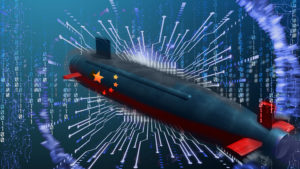 A senior scientist involved with the program told the South China Morning Post that China is working on updating old computer systems on nuclear submarines with an AI decision support system. The new system will relieve some of the load and mental burden from commanding officers. China believes its AI assistant could help commanders by assessing battlefield environments and recognizing threats more accurately than a human operator.
A senior scientist involved with the program told the South China Morning Post that China is working on updating old computer systems on nuclear submarines with an AI decision support system. The new system will relieve some of the load and mental burden from commanding officers. China believes its AI assistant could help commanders by assessing battlefield environments and recognizing threats more accurately than a human operator.
China is working to update the rugged old computer systems on nuclear submarines with artificial intelligence to enhance the potential thinking skills of commanding officers, a senior scientist involved with the programme told the South China Morning Post.
A submarine with AI-augmented brainpower not only would give China’s large navy an upper hand in battle under the world’s oceans but would push applications of AI technology to a new level, according to the researcher, who spoke on condition of anonymity because of the project’s sensitivity.
“Though a submarine has enormous power of destruction, its brain is actually quite small,” the researcher said.
While a nuclear submarine depends on the skill, experience and efficiency of its crew to operate effectively, the demands of modern warfare could introduce variables that would cause even the smoothest-run operation to come unglued.
For instance, if the 100 to 300 people in the sub’s crew were forced to remain together in their canister in deep, dark water for months, the rising stress level could affect the commanding officers’ decision-making powers, even leading to bad judgment.
An AI decision-support system with “its own thoughts” would reduce the commanding officers’ workload and mental burden, according to the researcher. […]
Up till now, the “thinking” function on a nuclear sub, including interpreting and answering signals picked up by sonar, a system for detecting objects under water by emitting sound pulses, has been handled almost exclusively by human naval personnel, not by machines.
Now, through AI technology, a convolutional neural network undergirds so-called machine learning. This structure underpins a decision support system that can acquire knowledge, improve skills and develop new strategy without human intervention.
By mimicking the workings of the human brain, the system can process a large amount of data. On a nuclear submarine, data could come from the Chinese navy’s rapidly increasing observation networks, the submarine’s own sensors or daily interactions with the crew.
Now, through AI technology, a convolutional neural network undergirds so-called machine learning. This structure underpins a decision support system that can acquire knowledge, improve skills and develop new strategy without human intervention.
By mimicking the workings of the human brain, the system can process a large amount of data. On a nuclear submarine, data could come from the Chinese navy’s rapidly increasing observation networks, the submarine’s own sensors or daily interactions with the crew.
Source: South China Morning Post



